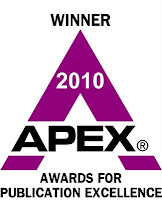Illinois-Indiana Sea Grant is proud to announce that the program has won two 2010 APEX Awards for Publication Excellence.
The Medicine Chest, a new curriculum collection addressing the problem of disposal of unwanted medicines, won in the category Green Materials. This award is shared by Robin Goettel, associate director for education, Terri Hallesy, education specialist, Susan White, graphic designer, and Tracy Colin, communication assistant. The Medicine Chest gives educators a tool to create service-learning experiences for their students, while tackling an important environmental and human health concern.
The second APEX award went to the display Get Rid of Stuff Sensibly in the category One-of-a-Kind Green Publications. Named in this award are White and Irene Miles, communication coordinator. This display informs audiences of all ages about how to recycle, reuse, or sensibly dispose of medicines, electronics, fish and aquatic plants and more. It includes a colorful marble game that provides a fun way to think through ‘getting rid of stuff.’ On display at the Illinois State Fair and other venues, Get Rid of Stuff Sensibly has thus far engaged 4,600 people on the issue of sensible disposal.


